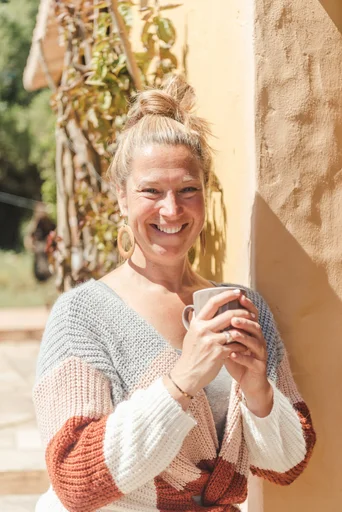Revolved Side Angle Pose: The Complete Guide - Yoga Journal

Introduction to Revolved Side Angle Pose
Revolved Side Angle Pose, also known as Parivrtta Parsvakonasana in Sanskrit, is a powerful standing pose with a deep twist that engages the entire body. My personal journey with Revolved Side Angle began as a quest for balance and strength in both body and mind. The intense twist challenged my flexibility, strength, and sense of balance, while also teaching me about the importance of breath and presence of mind. This pose has been an integral part of my yoga practice, helping me increase body awareness and mindfulness.
The significance of Revolved Side Angle Pose in Yoga Journal cannot be overstated. This balancing yoga pose offers a myriad of benefits, including promoting strength, flexibility, and balance. It helps improve spinal flexibility, core strength, digestion, leg strength, balance, stability, focus, concentration, and reduces stress and tension. Additionally, it aids in detoxifying the body and connecting movement with breath. Learning about the potential benefits of this pose can be as exciting as learning the technique itself.
This standing revolved pose provides strength and mobility to various parts of the body such as ankles, legs, knees, hips, back, shoulders, and neck. It improves circulation, aids digestion, benefits the spine and strengthens the sexual pelvic floor muscles. The combination of benefits from Extended Side Angle Pose (Utthita Parsvakonasana), Warrior I (Virabhadrasana I), and Crescent Lunge Twist (Parivrtta Anjaneyasana) makes Revolved Side Angle Pose an essential addition to any yoga practice.
The Fundamentals of Revolved Side Angle Pose

Understanding the Basics of Revolved Side Angle Pose
When practicing Revolved Side Angle Pose, it's essential to understand the fundamental aspects that contribute to its effectiveness. Let's delve into the anatomy of the pose and explore its Sanskrit connection.
The Anatomy of the Pose
Revolved Side Angle Pose primarily engages the lower body, including the quadriceps, hamstrings, and glutes. The deep twist activates the obliques and strengthens the core, promoting stability and balance. Additionally, this pose opens up the chest and shoulders, enhancing flexibility in these areas. The combination of strength-building and flexibility makes it a well-rounded posture for overall physical development.
Parivrtta Parsvakonasana: The Sanskrit Connection
The name "Parivrtta Parsvakonasana" originates from Sanskrit, where "parivrtta" translates to "revolved," "parsva" means "side," and "kona" represents "angle." This linguistic insight sheds light on the essence of this yoga pose—bringing attention to the revolved nature of the posture while emphasizing its focus on lateral stretching and strengthening.
Step-by-Step Guide to Mastering the Revolved Side Angle Pose
Mastering Revolved Side Angle Pose requires attention to detail in both starting position and alignment, as well as incorporating specific breathing and focusing techniques.
Starting Position and Alignment
Begin in a standing position at the top of your mat.
Step your feet wide apart, with your right foot facing forward and your left foot turned slightly inward.
Bend your right knee, ensuring it aligns with your ankle while keeping your left leg straight.
Extend your arms out to shoulder height, parallel to the ground.
Exhale as you twist from your waist towards the right side, bringing your left elbow to rest on the outside of your right thigh.
Maintain a strong foundation through both legs while actively pressing into the outer edge of your back foot.
Breathing and Focusing Techniques
As you settle into Revolved Side Angle Pose, focus on maintaining steady breaths by inhaling deeply through your nose and exhaling slowly through pursed lips. Direct your attention towards creating length along your spine with each inhale, while deepening into the twist with every exhale. Engage drishti (gaze) by fixing your eyes on a point for enhanced concentration and balance.
This comprehensive approach ensures that practitioners can gradually progress in their practice of Revolved Side Angle Pose while reaping its numerous benefits.
Advancing Your Revolved Side Angle Pose
As practitioners progress in their yoga journey, they may encounter common challenges when advancing their Revolved Side Angle Pose. Overcoming these obstacles requires a combination of balance, flexibility, and strength-building techniques to enhance the practice.
Common Challenges and How to Overcome Them
Balancing and Flexibility Tips
One common challenge in mastering Revolved Side Angle Pose is finding balance while maintaining the deep twist. This requires a strong foundation through both legs and engaging the core for stability. To improve balance, focus on grounding through the outer edge of the back foot while actively pressing into the mat with the front foot. Additionally, incorporating standing balancing poses such as Tree Pose (Vrksasana) and Warrior III (Virabhadrasana III) can help develop stability and proprioception.
Flexibility plays a crucial role in achieving a deep twist in this pose. Regular practice of hip-opening yoga poses like Pigeon Pose (Eka Pada Rajakapotasana) and Bound Angle Pose (Baddha Konasana) can gradually increase hip flexibility, making it easier to deepen into the revolved position. Moreover, incorporating gentle spinal twists during warm-ups can prepare the body for the deeper rotation required in Revolved Side Angle Pose.
Strengthening Your Core and Legs
Strengthening the core and legs is essential for maintaining stability and control in Revolved Side Angle Pose. Incorporating core-focused yoga poses such as Boat Pose (Navasana) and Plank Pose (Phalakasana) can help build abdominal strength, enhancing support during the twist. Additionally, practicing standing poses like Warrior II (Virabhadrasana II) and Chair Pose (Utkatasana) strengthens the legs, providing a solid foundation for this challenging asana.
By addressing these common challenges with targeted tips for balance, flexibility, core strength, and leg stability, practitioners can overcome obstacles and advance their practice of Revolved Side Angle Pose effectively.
Variations and Modifications of the Revolved Side Angle Pose
Using Props for Support
For individuals who are working on improving their flexibility or facing difficulties with balance in Revolved Side Angle Pose, utilizing props can provide valuable support. A yoga block placed under the hand that rests on the outside of the bent knee can offer additional height, making it more accessible to maintain proper alignment while deepening into the twist. Similarly, using a strap around the extended arm allows practitioners to maintain length through their side body while gradually working towards clasping their hands together behind their back.
Knee Revolved Side Angle for Beginners
Beginners or individuals with limited mobility may find it challenging to perform Revolved Side Angle Pose with ease. In such cases, modifying the pose by lowering the back knee to the mat can reduce strain on the lower body while still allowing for a gentle twist. This variation provides an accessible entry point for beginners to experience the benefits of this pose without compromising alignment or stability.
Integrating these variations and modifications into one's practice offers inclusive options for individuals at different levels of experience or with specific physical considerations.
Teaching and Modifying Revolved Side Angle Pose

As a yoga instructor, sharing the intricacies of Revolved Side Angle Pose in Yoga Journal is an opportunity to guide practitioners through this deep, standing twist that challenges balance and strengthens the legs and core. It's essential to provide comprehensive instruction on teaching and modifying this pose to ensure practitioners can experience its benefits effectively.
Tips for Teaching Revolved Side Angle Pose in Yoga Journal
Cueing and Adjustments
When teaching Revolved Side Angle Pose, clear and precise cueing is crucial for guiding practitioners into the correct alignment and depth of the pose. Emphasize lengthening the side body as a preparatory action for deep twisting, which not only creates more space in the torso but also facilitates deeper, smoother breathing. Utilize cues such as "lengthen from your left heel through your left fingertips" to encourage practitioners to engage their entire body while maintaining proper alignment.
Adjustments play a significant role in refining the practitioner's experience in Revolved Side Angle Pose. Providing gentle adjustments to help students find stability and depth in their twist can enhance their practice. For instance, gently pressing against the outer edge of the back foot or offering a supportive touch on the shoulder can assist practitioners in deepening their twist while maintaining balance.
Creating a Supportive Environment
Creating a supportive environment for teaching Revolved Side Angle Pose involves fostering an atmosphere of encouragement, inclusivity, and safety. Encourage open communication with students, allowing them to express any physical limitations or concerns they may have. This openness fosters trust between instructors and practitioners, creating an environment where individuals feel comfortable exploring their practice without judgment or pressure.
Incorporating modifications and variations into class sequences ensures that all participants feel supported regardless of their experience level or physical capabilities. By acknowledging individual needs and providing options for different body types or abilities, instructors can cultivate an inclusive space where everyone feels empowered to explore Revolved Side Angle Pose at their own pace.
Personalizing the Revolved Side Angle Pose
Listening to Your Body
Encouraging practitioners to listen to their bodies during Revolved Side Angle Pose is paramount for promoting mindfulness and self-awareness. Remind students that each individual's body is unique, and it's essential to honor its signals during practice. Encourage them to find comfort within discomfort by breathing deeply into areas of tension while respecting their limits.
By fostering an environment where practitioners are encouraged to listen inwardly, instructors empower them to make conscious choices about how deeply they wish to explore the pose based on their body's feedback.
Encouraging Progress Not Perfection
Emphasizing progress over perfection creates a positive mindset shift among practitioners engaging with Revolved Side Angle Pose. Encourage students to celebrate incremental improvements in their practice rather than striving for an idealized version of the pose. By acknowledging small victories—such as improved balance or increased flexibility—practitioners develop a sense of accomplishment that fuels continued dedication to their yoga journey.
Promoting progress over perfection also reinforces the idea that yoga is a personal journey—one that unfolds at its own pace with each individual's unique experiences and growth.
Conclusion
Reflecting on my journey with Revolved Side Angle Pose brings to light the transformative impact it has had on my yoga practice. This powerful standing pose, also known as Parivrtta Parsvakonasana, has been instrumental in promoting strength, flexibility, and balance throughout my body. The deep twist not only challenged me physically but also fostered a sense of mental clarity and presence. Through consistent practice, I have experienced improvements in spinal flexibility, core strength, digestion, leg strength, balance, stability, focus, concentration, and stress reduction.
Continuing your practice beyond the Yoga Journal is an opportunity to delve deeper into the nuances of Revolved Side Angle Pose. As you progress in your yoga journey, remember to follow the proper alignment procedures and seek guidance from a trained yoga instructor if you are a beginner. Additionally, for any health concerns or specific physical considerations, consulting a healthcare professional is essential to ensure a safe and beneficial practice.
When practicing revolved poses such as Revolved Side Angle Pose, creating physical space for comfortable twisting is crucial. Lengthening the spine before twisting can help create the necessary space for deeper twists while promoting deep and smooth breathing. Embracing this introspective pose with mindful breathing fosters a quiet mind and nourishes both body and spirit.
As you continue your yoga journey beyond this guide, remember that progress takes precedence over perfection. Embrace each step of your practice with patience and dedication. Whether you are new to yoga or seeking to refine your existing practice, approach Revolved Side Angle Pose with an open heart and a willingness to explore its profound benefits.
See Also
Yoga Basics: A Comprehensive Introduction to Yoga
The Complete Guide to Yoga: Origins, Beliefs, Language, and More
Introduction to Kundalini Yoga: A Beginner's Essential Handbook
We bring back the importance of initiation into womanhood by Roos-Veerle Krijnen & Ella-June Henrard
Welcome to the Women’s Initiation Retreat by Naked Truth Retreats, a transformative journey into the depths of your True Feminine Nature. This retreat, scheduled from 17th to 24th August 2024 in Portugal, invites you to remember the sacredness and wholeness of your being.
Roos-Veerle Krijnen & Ella-June Henrard



